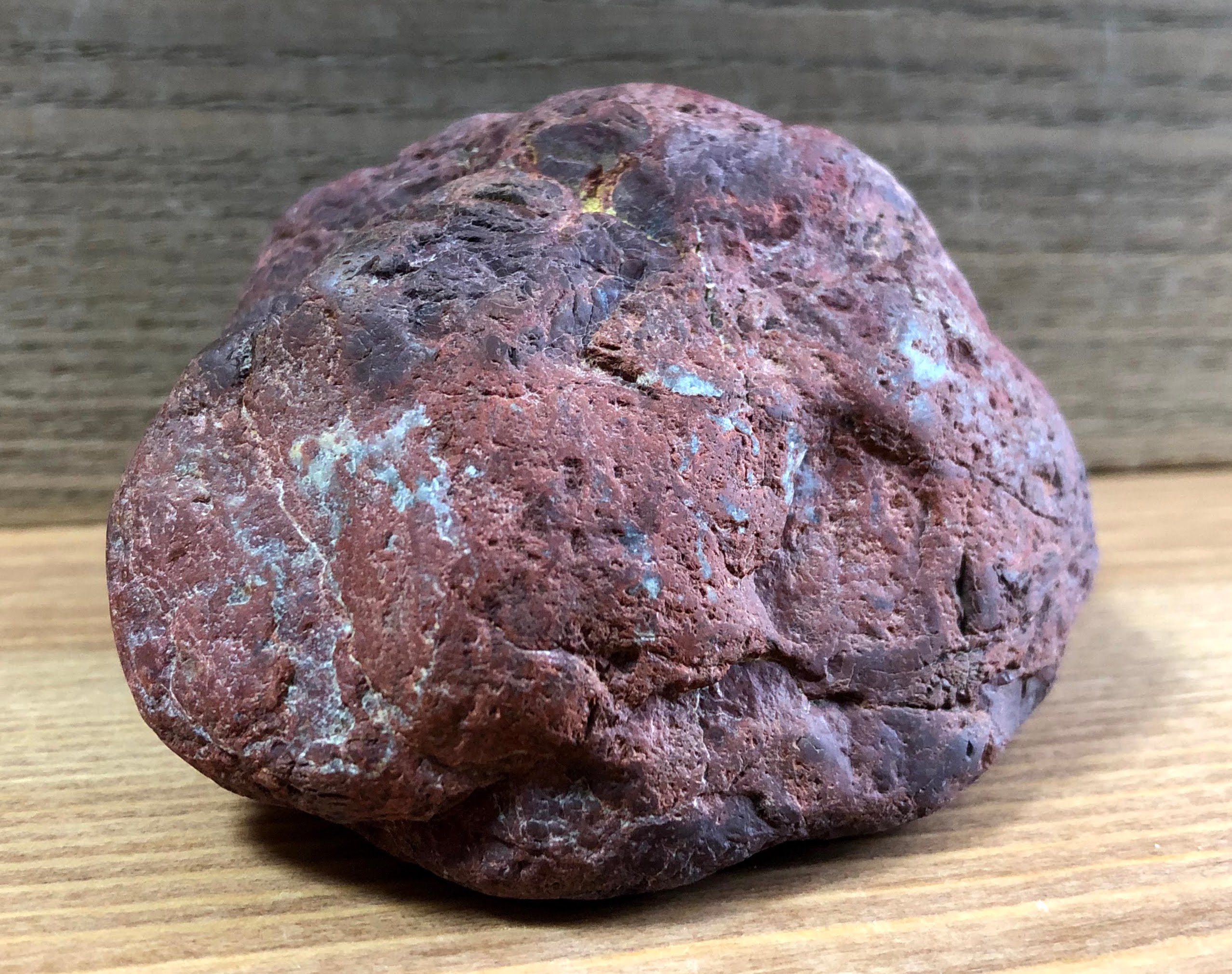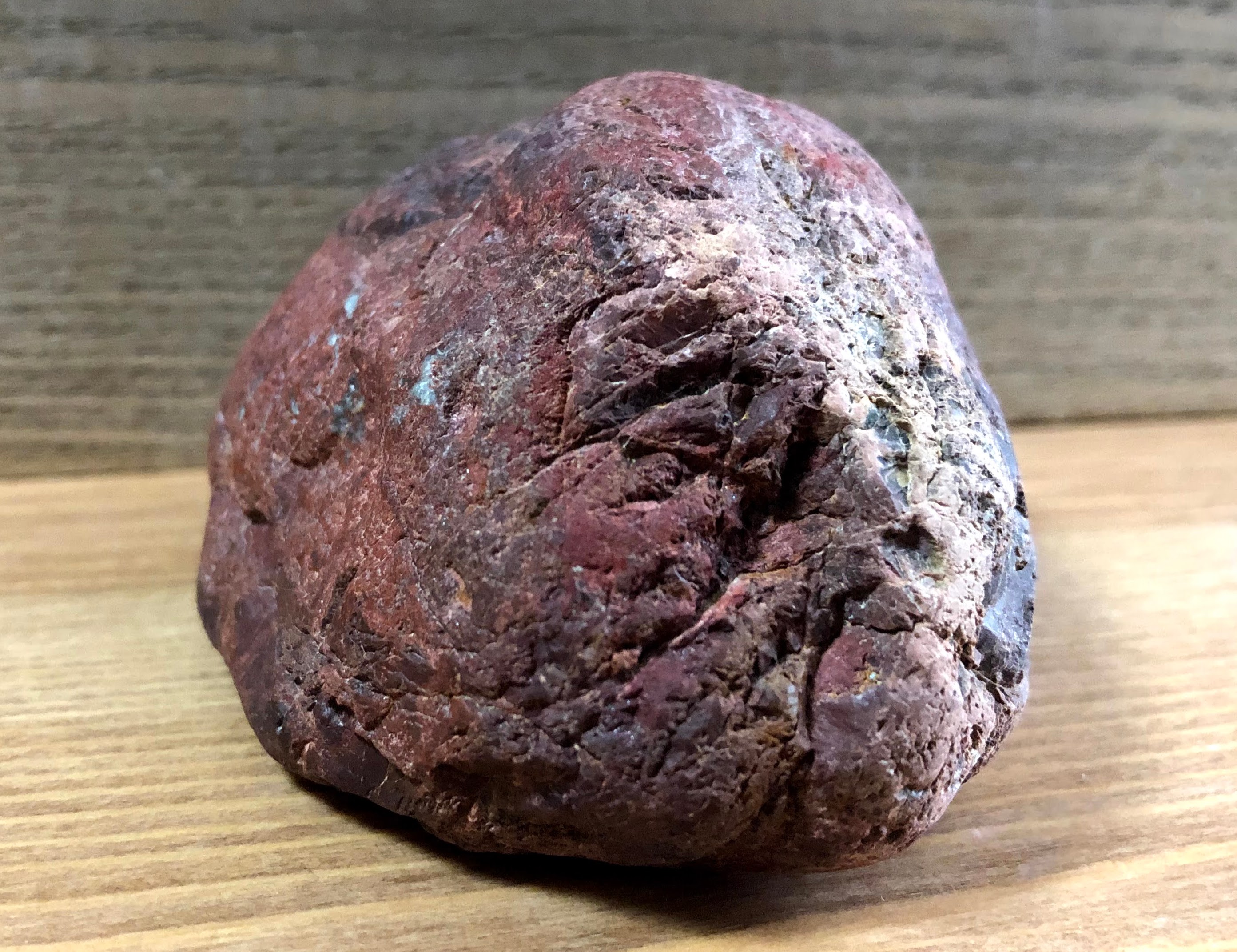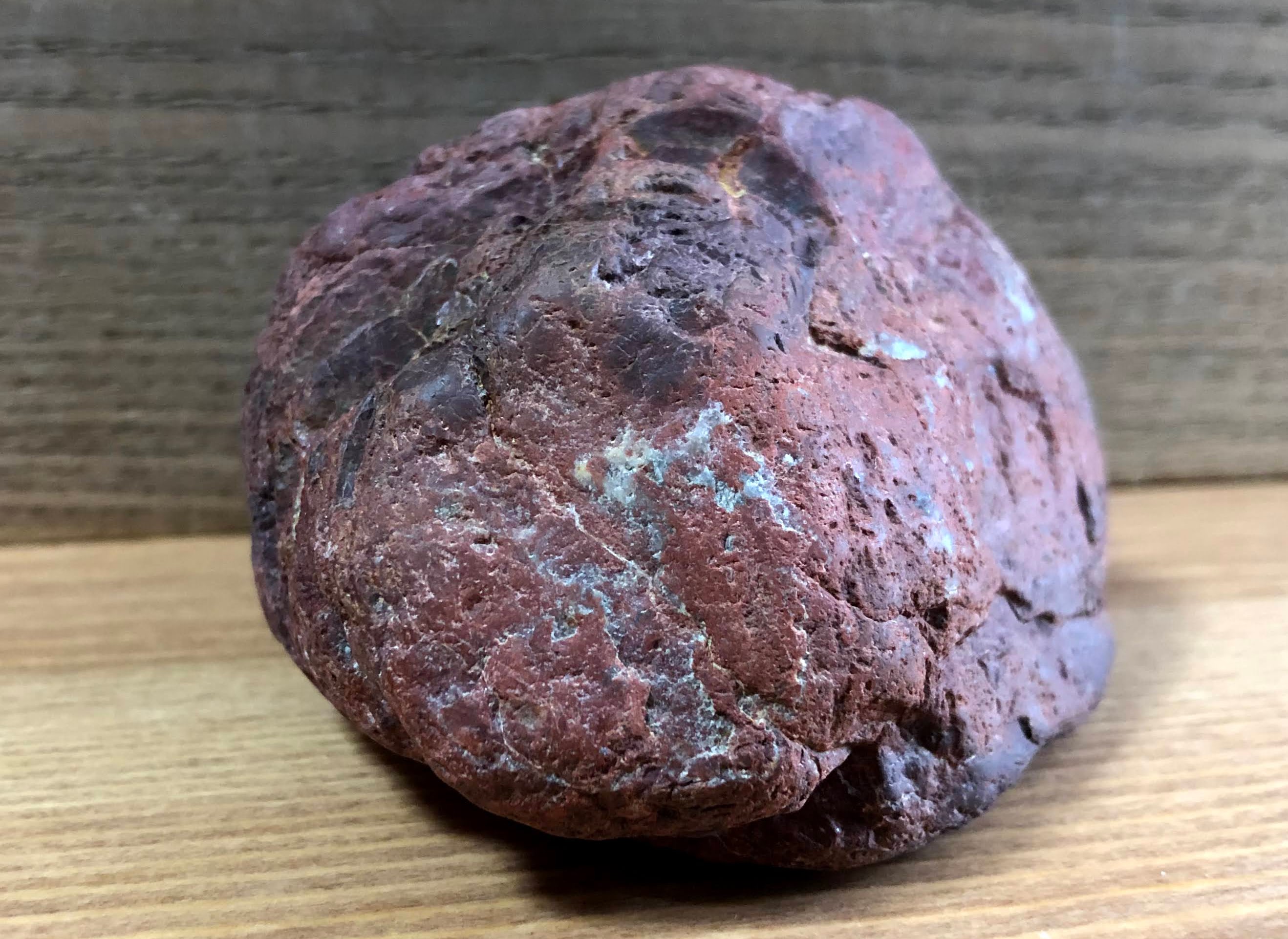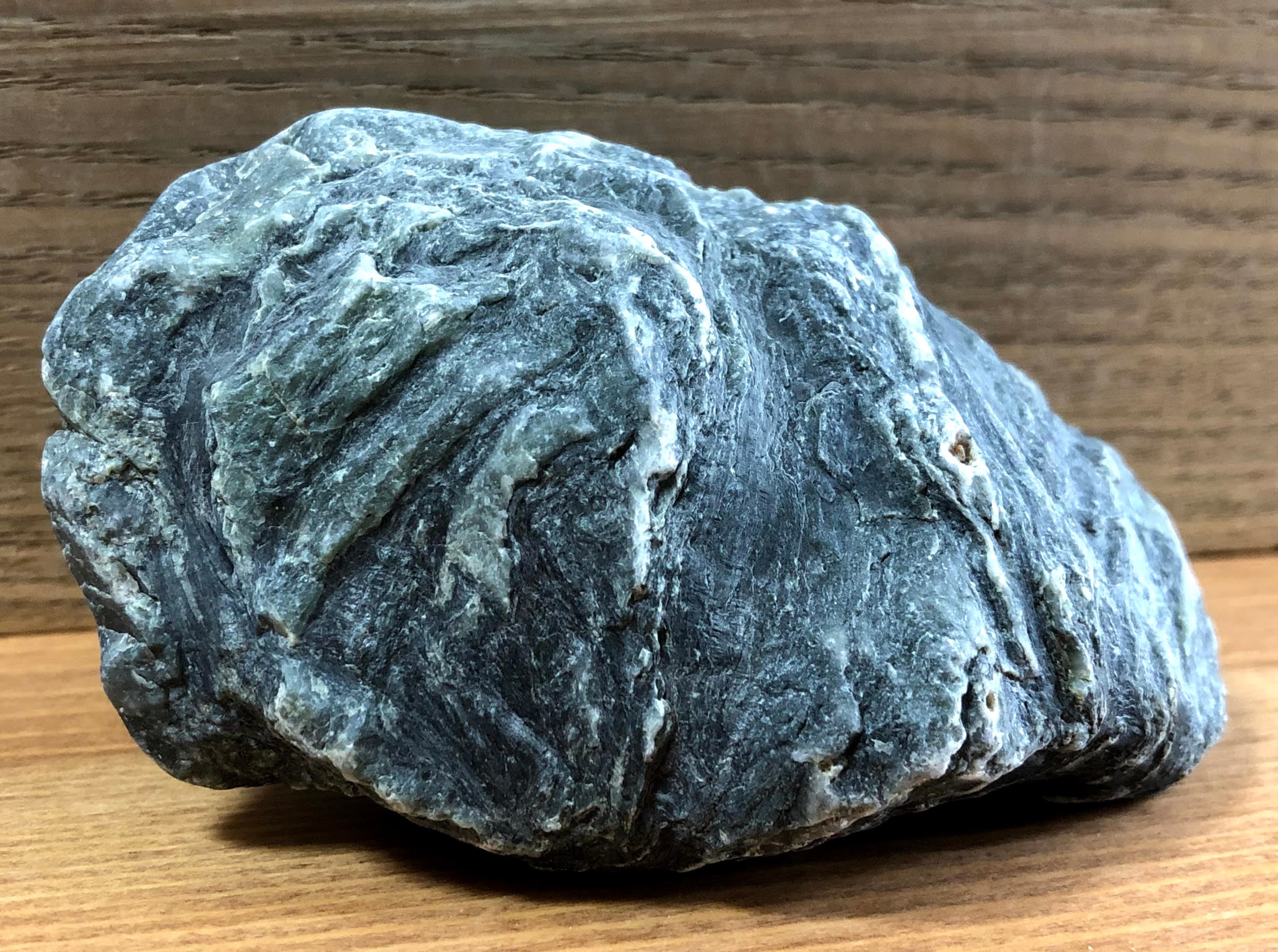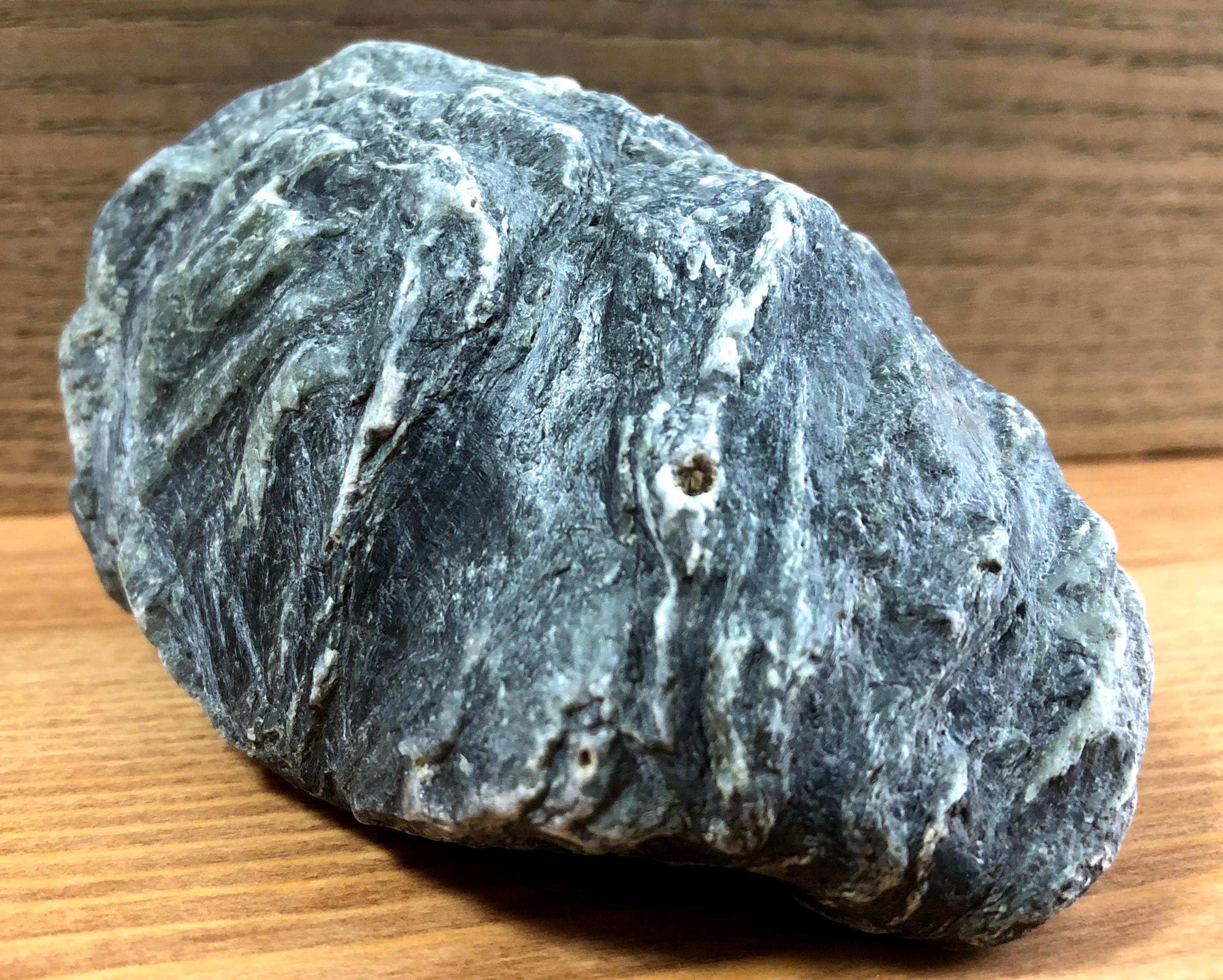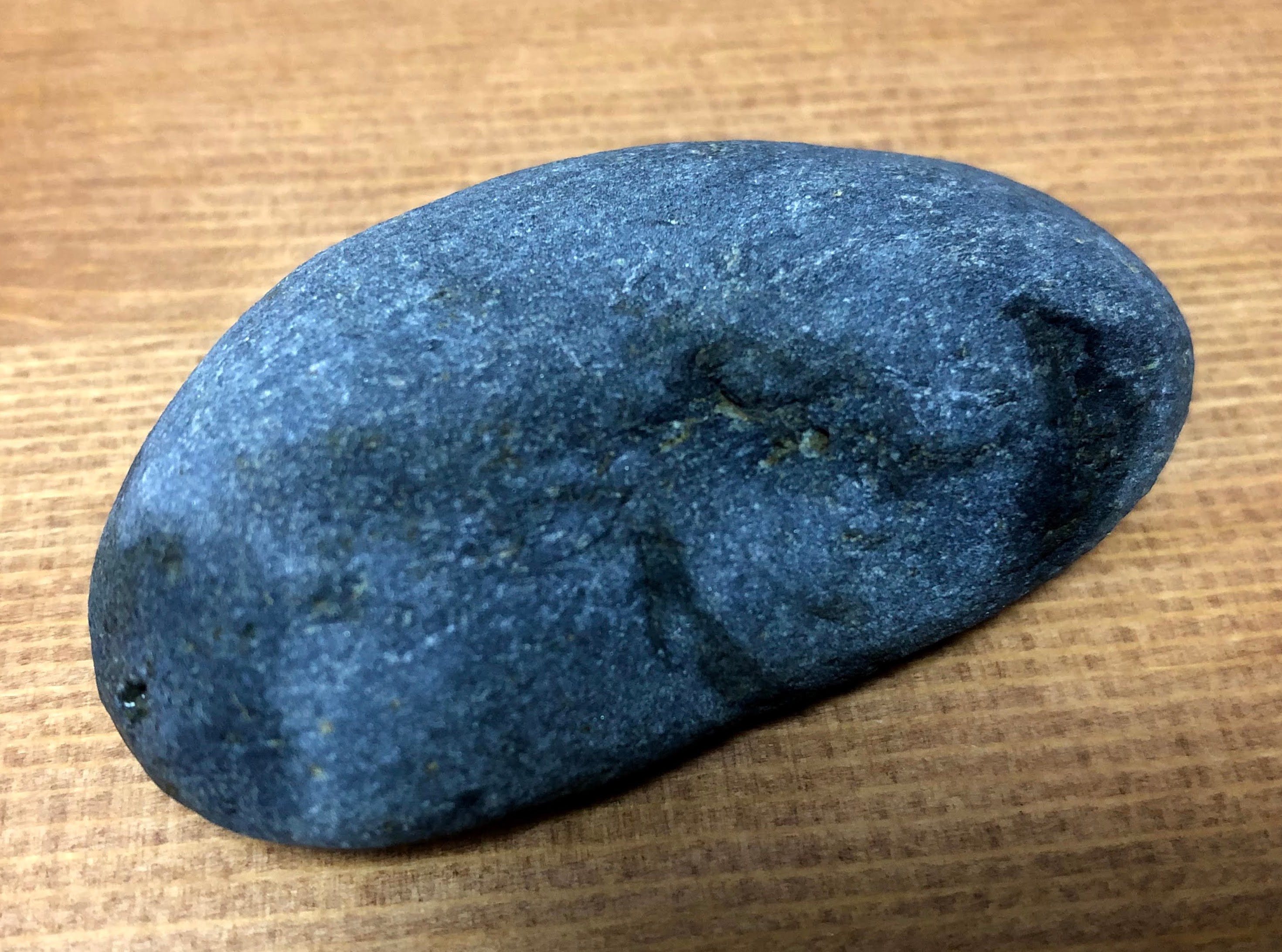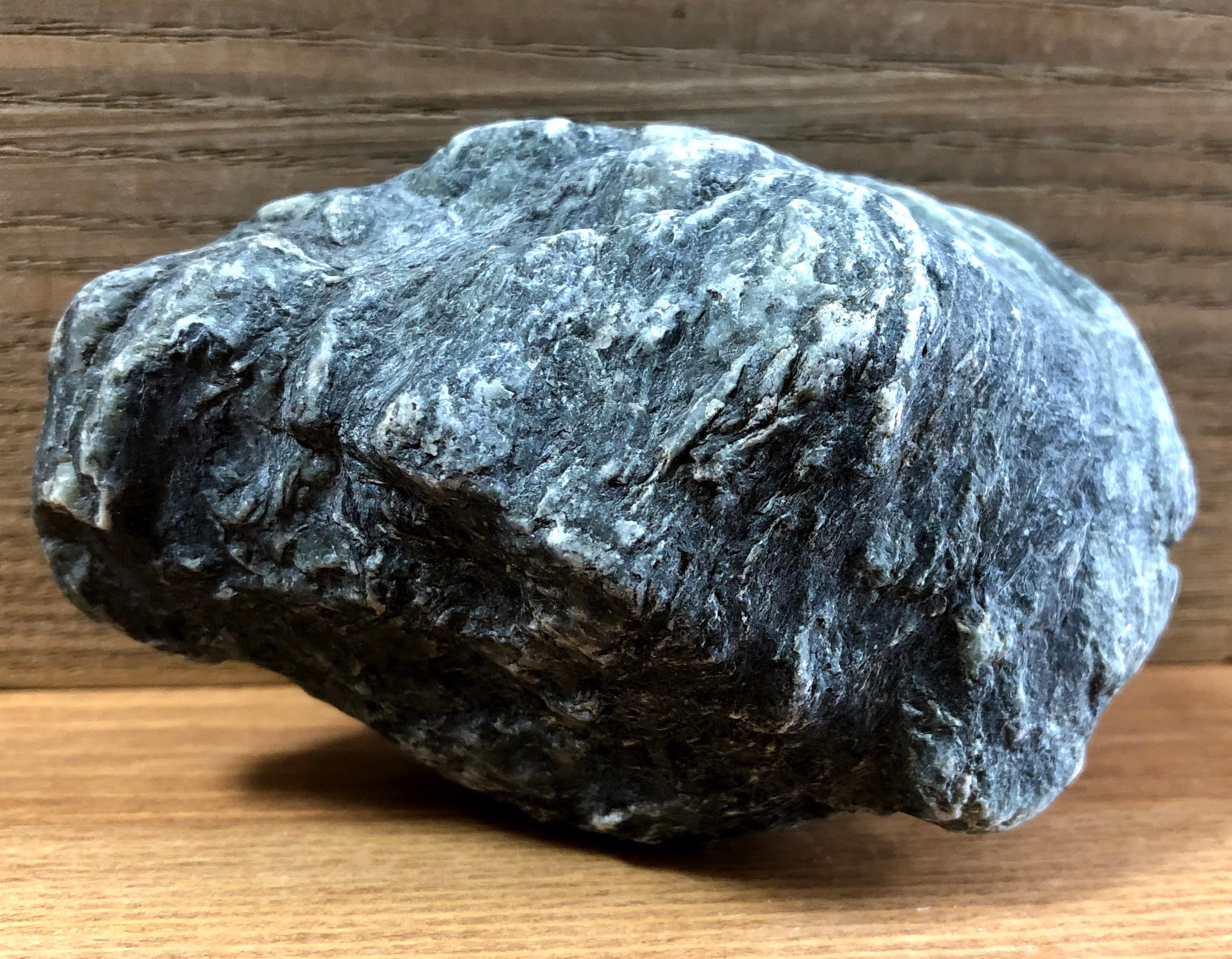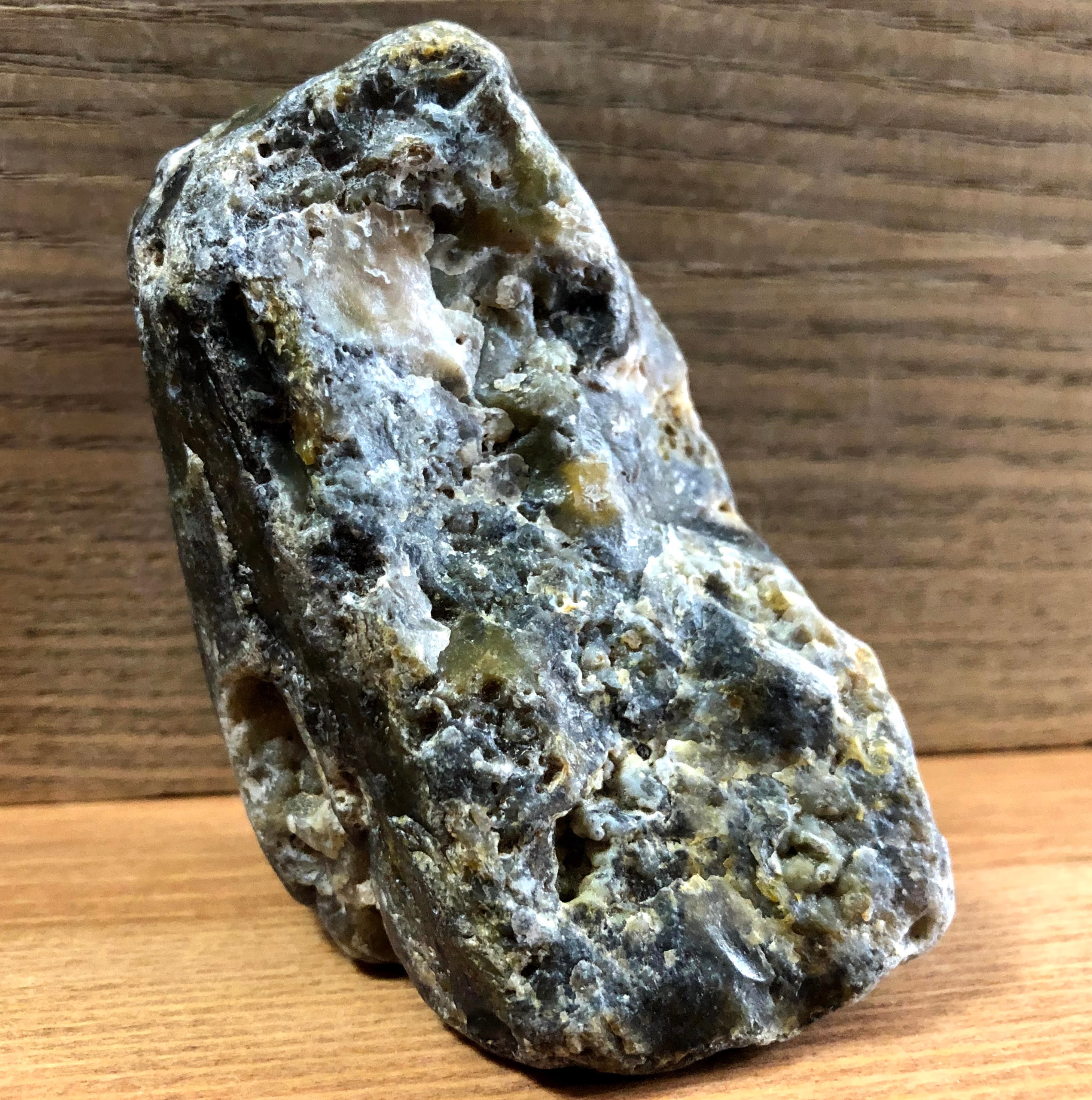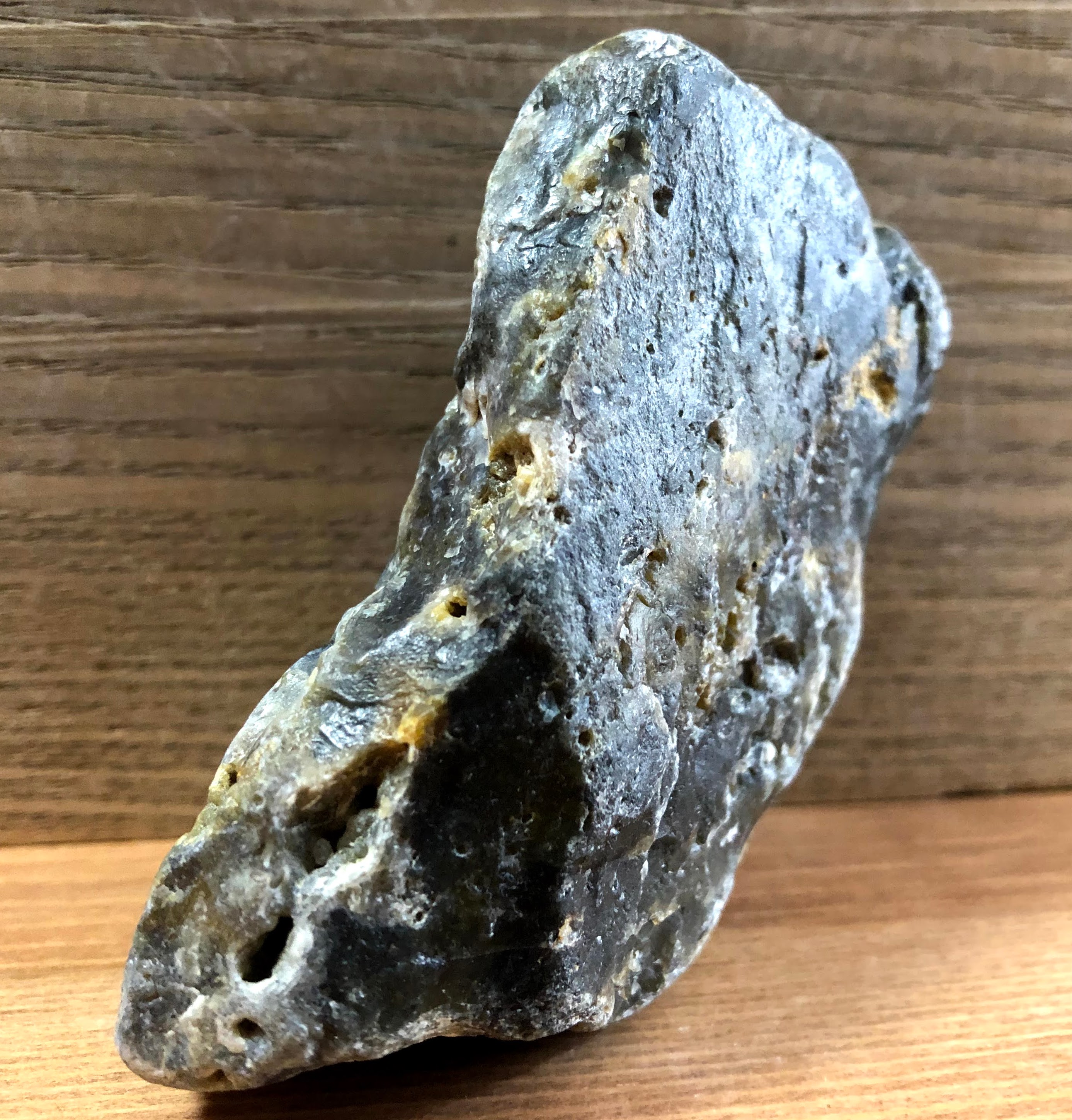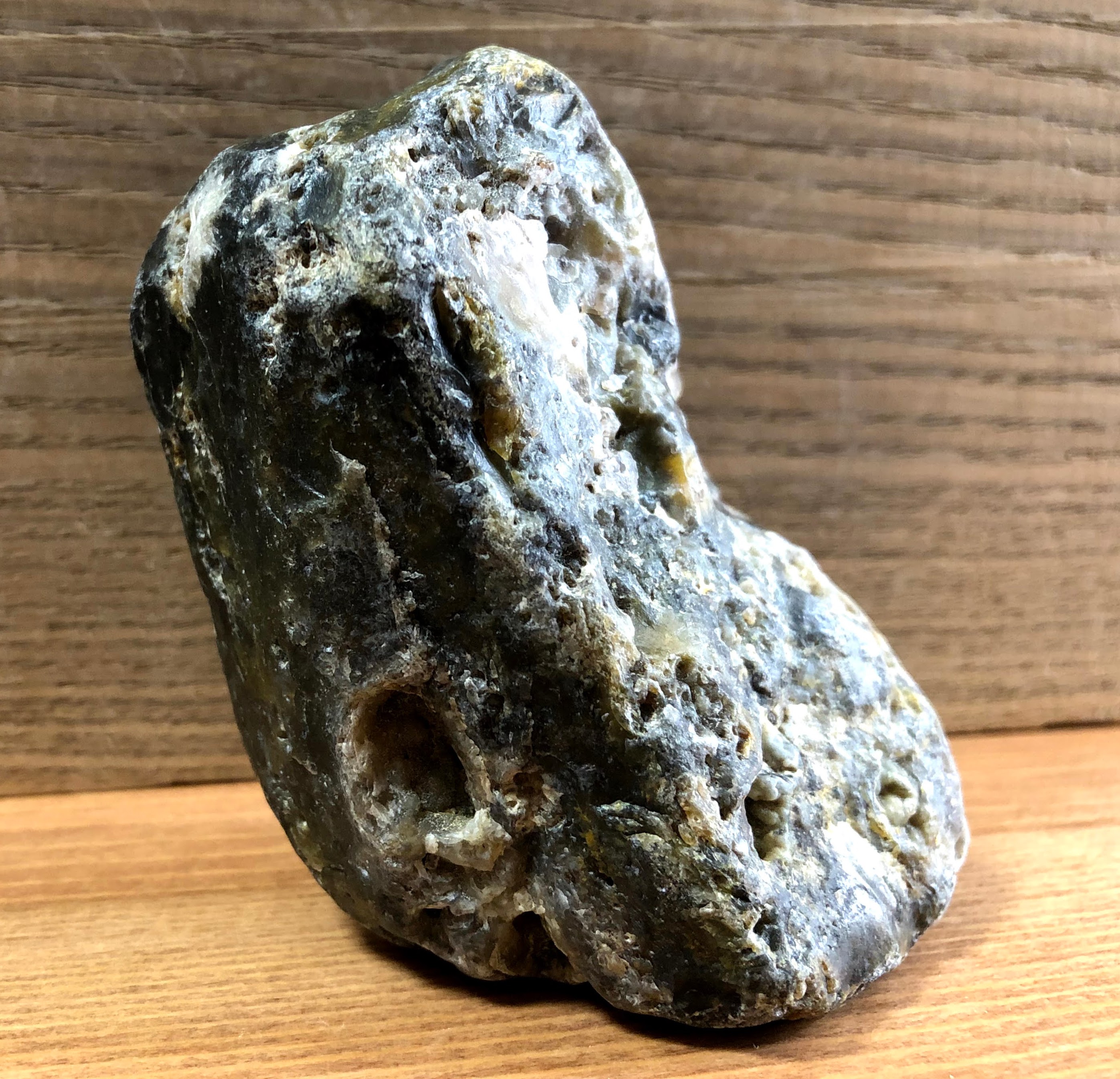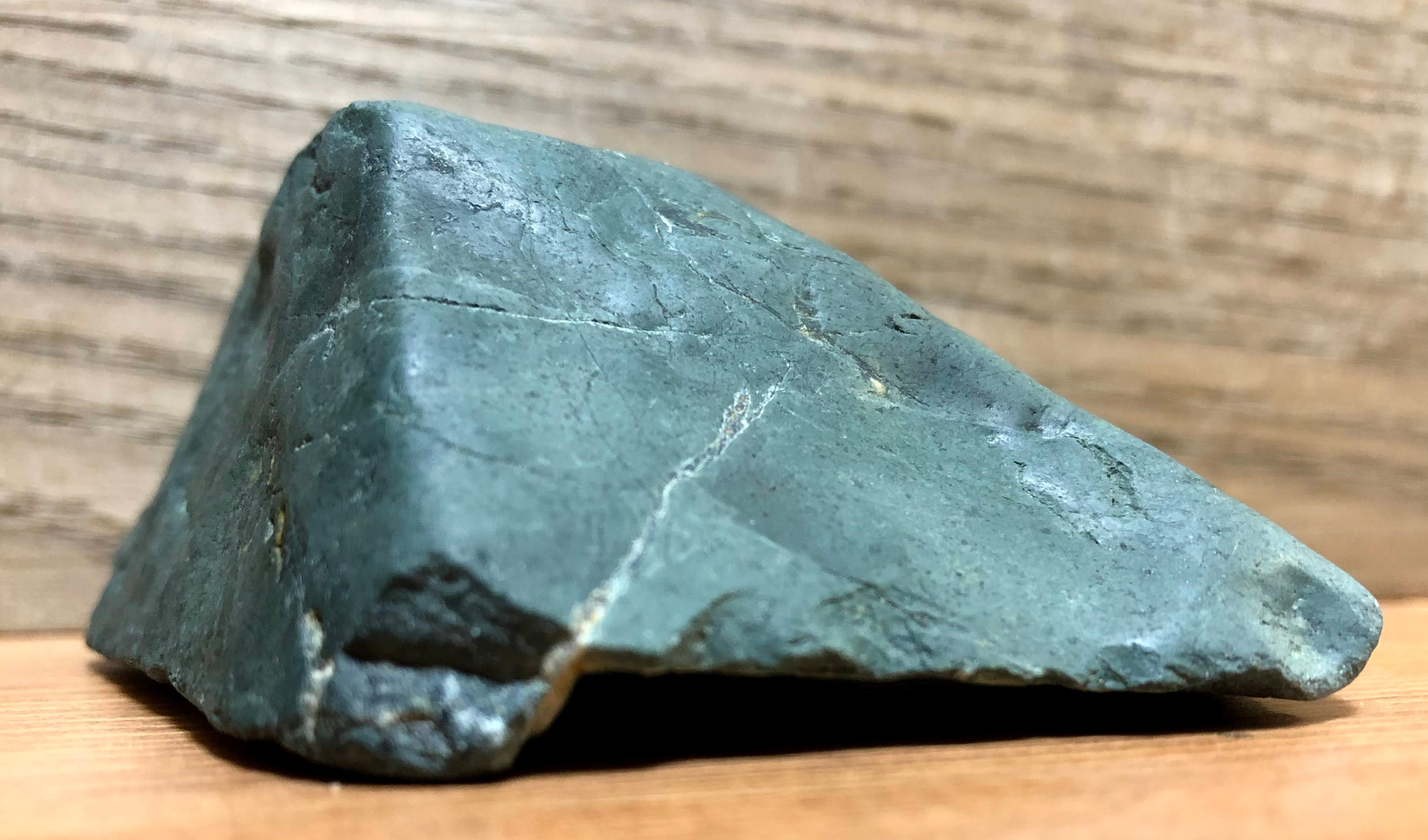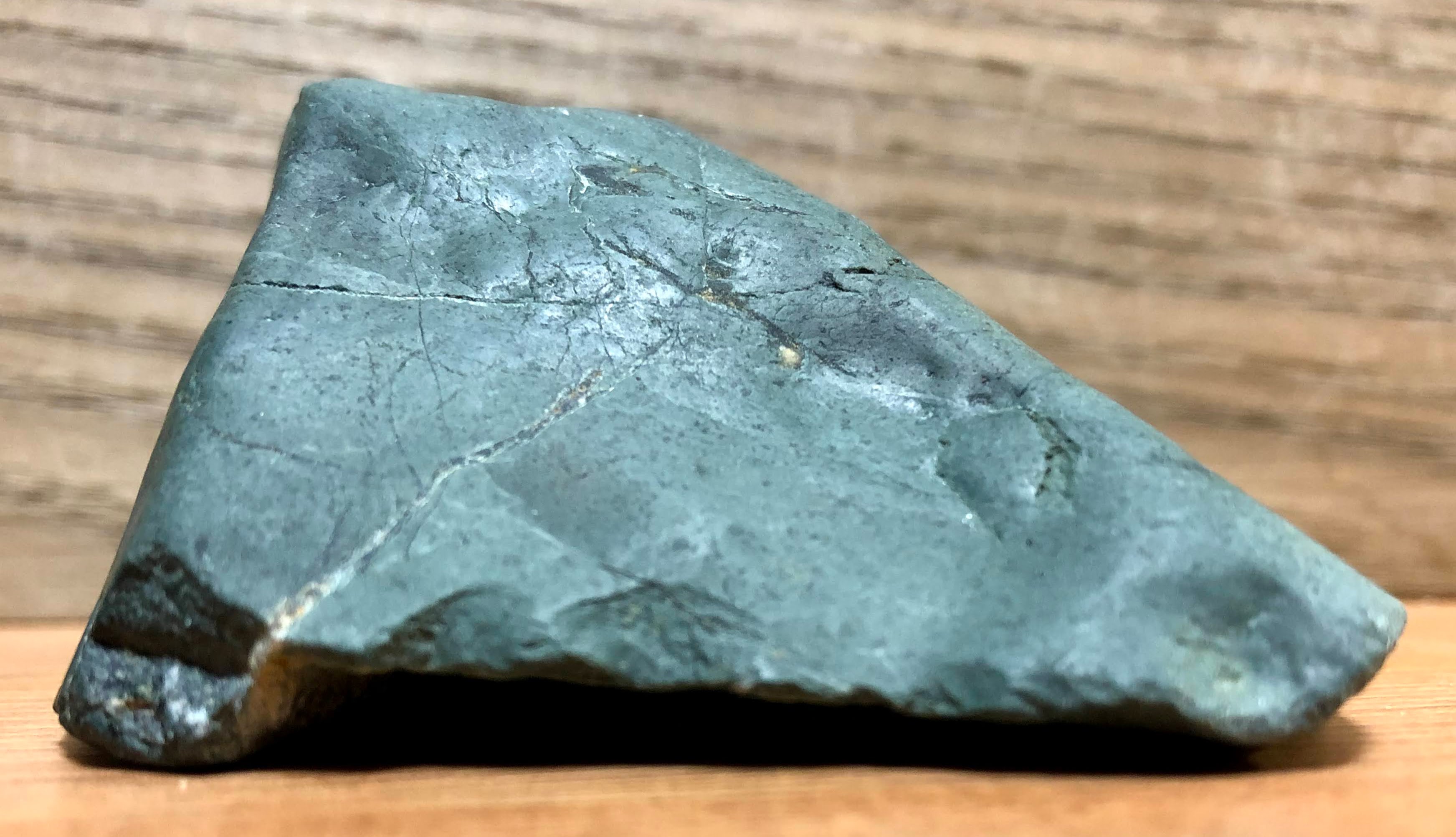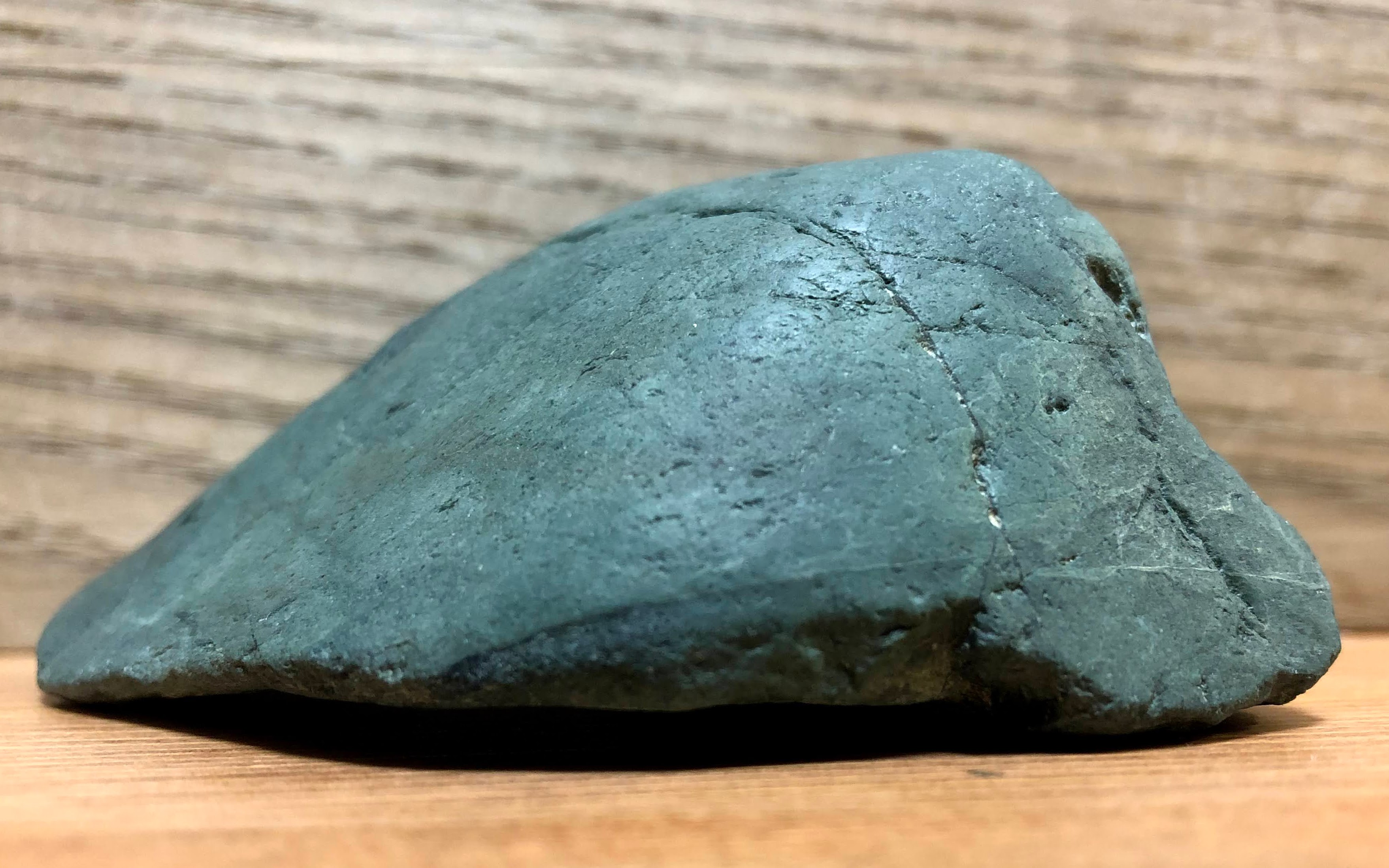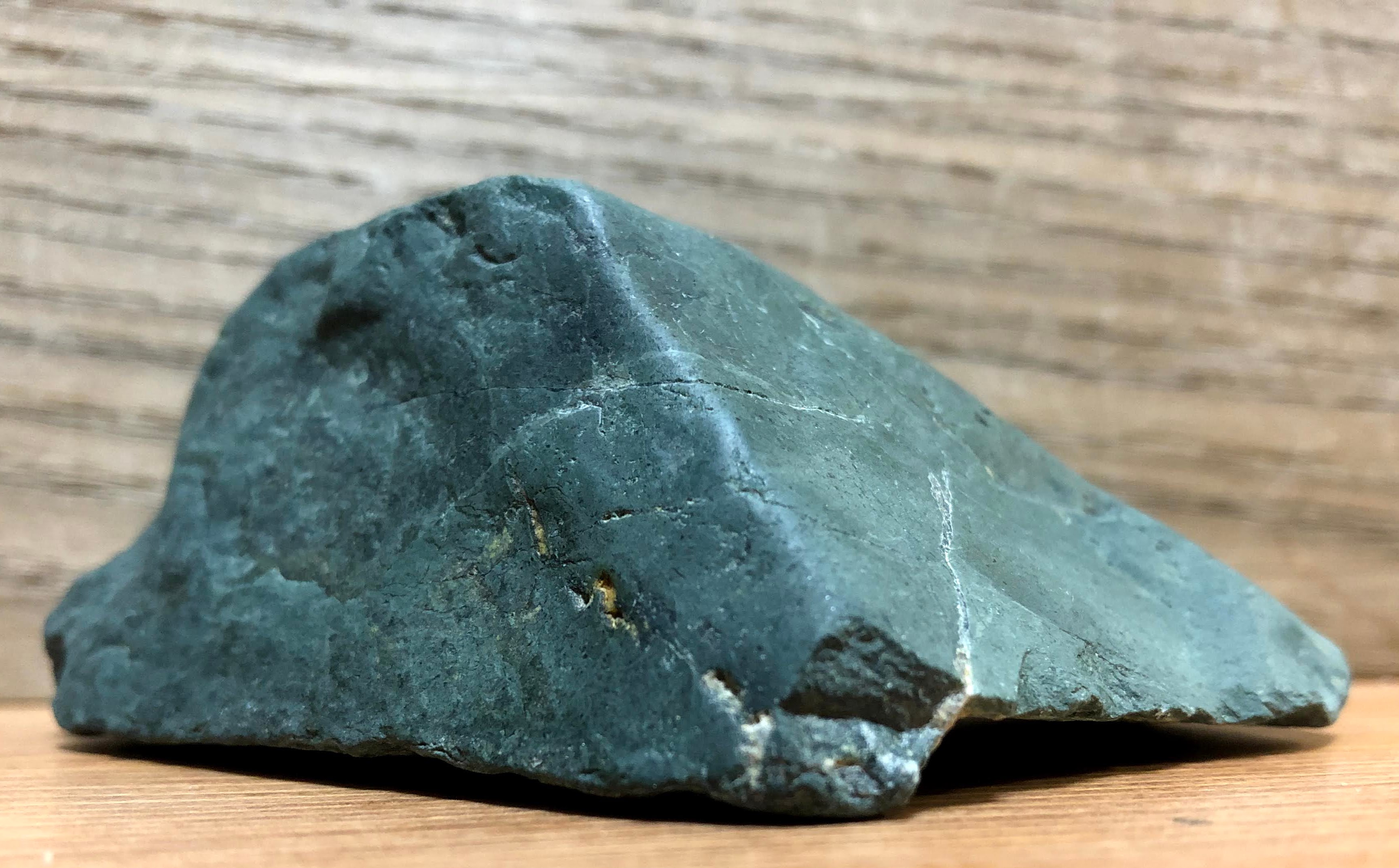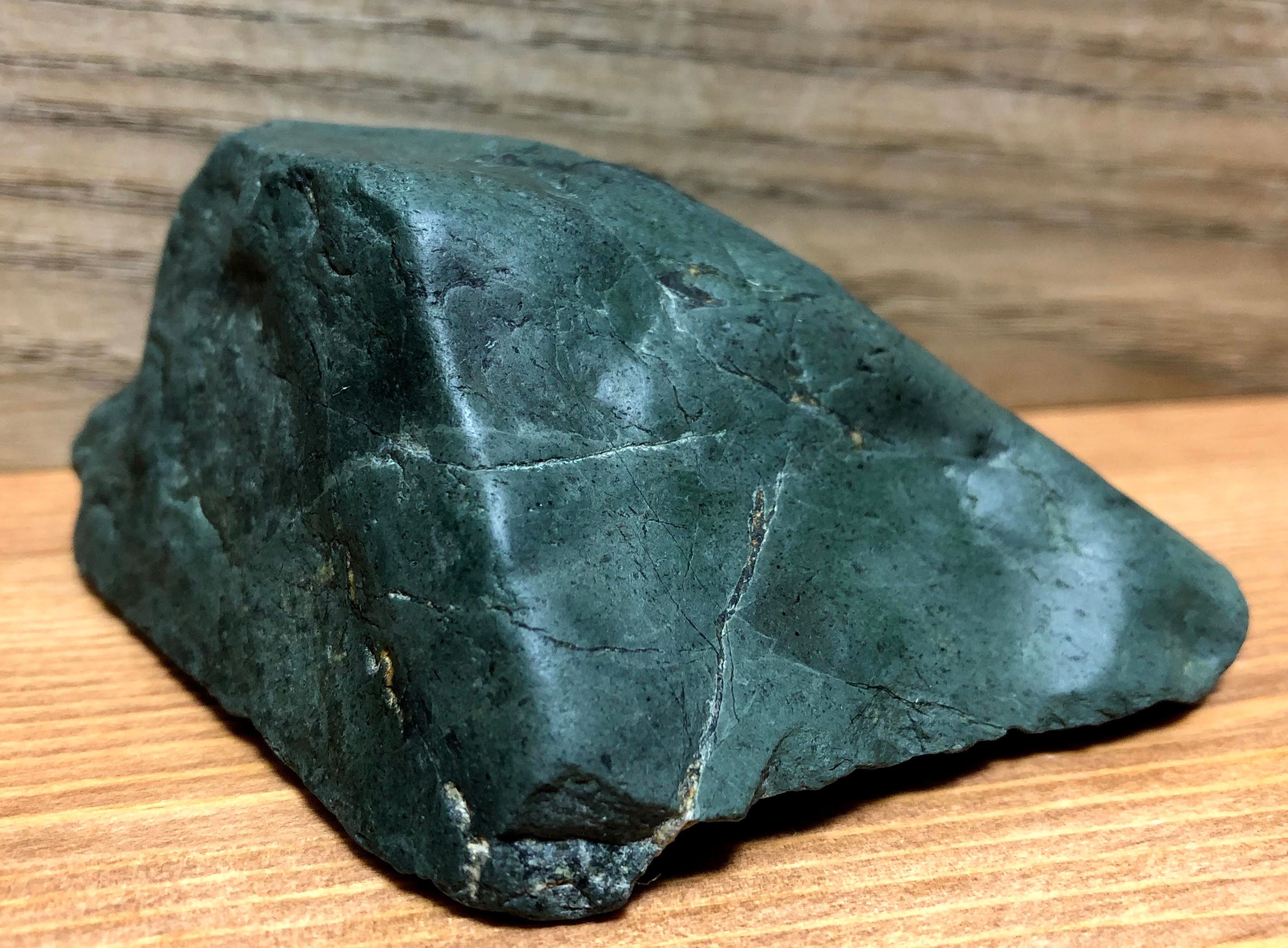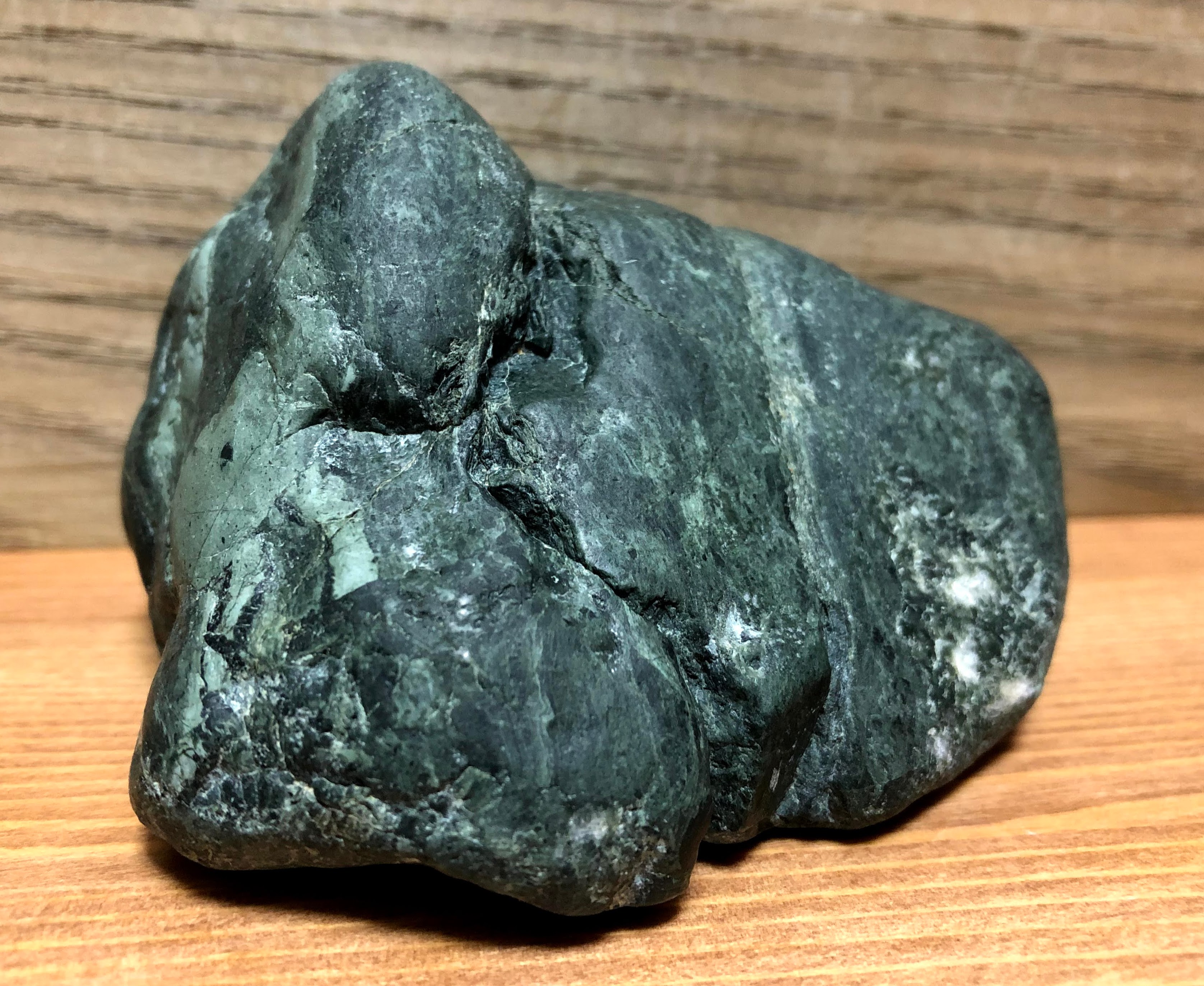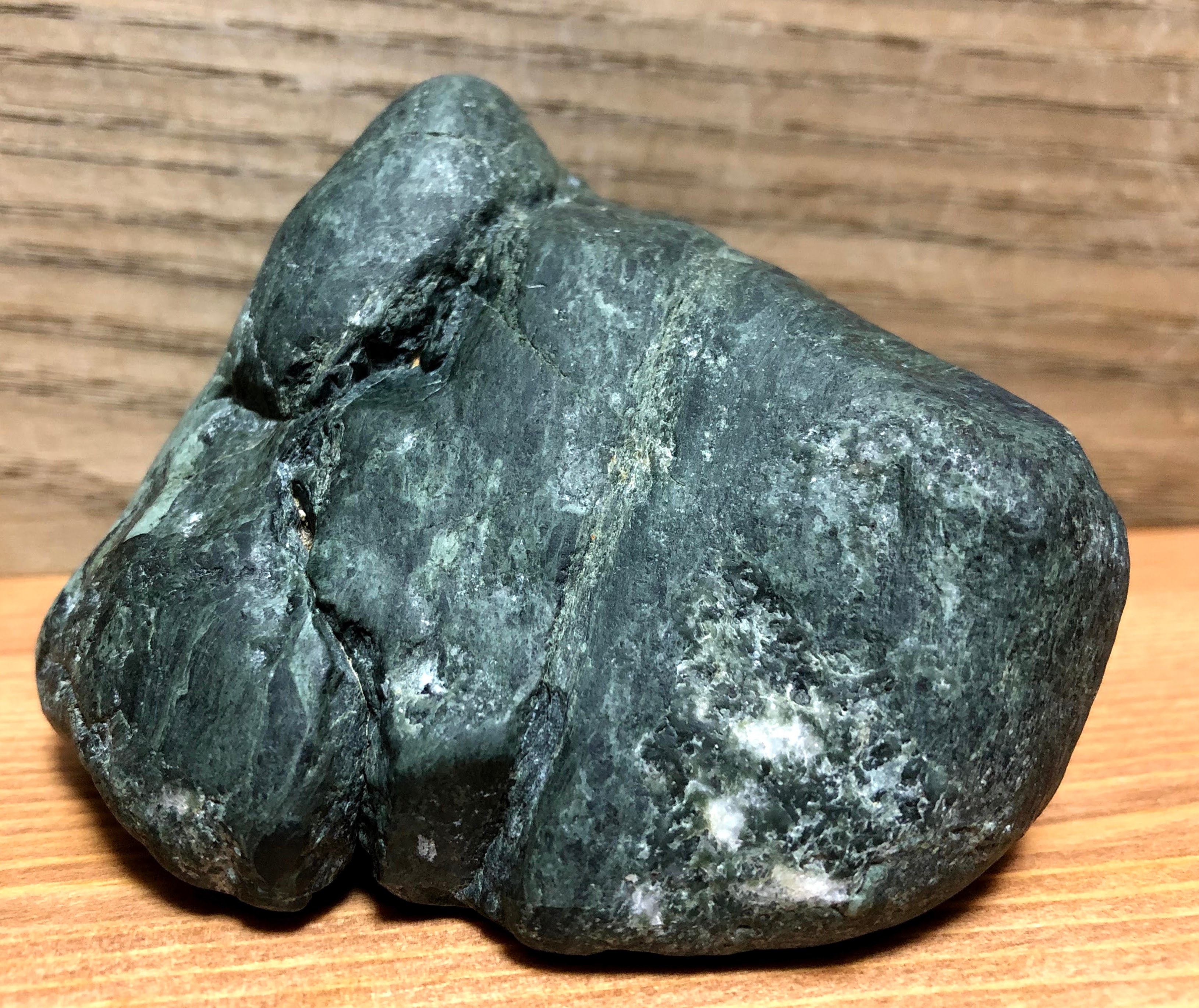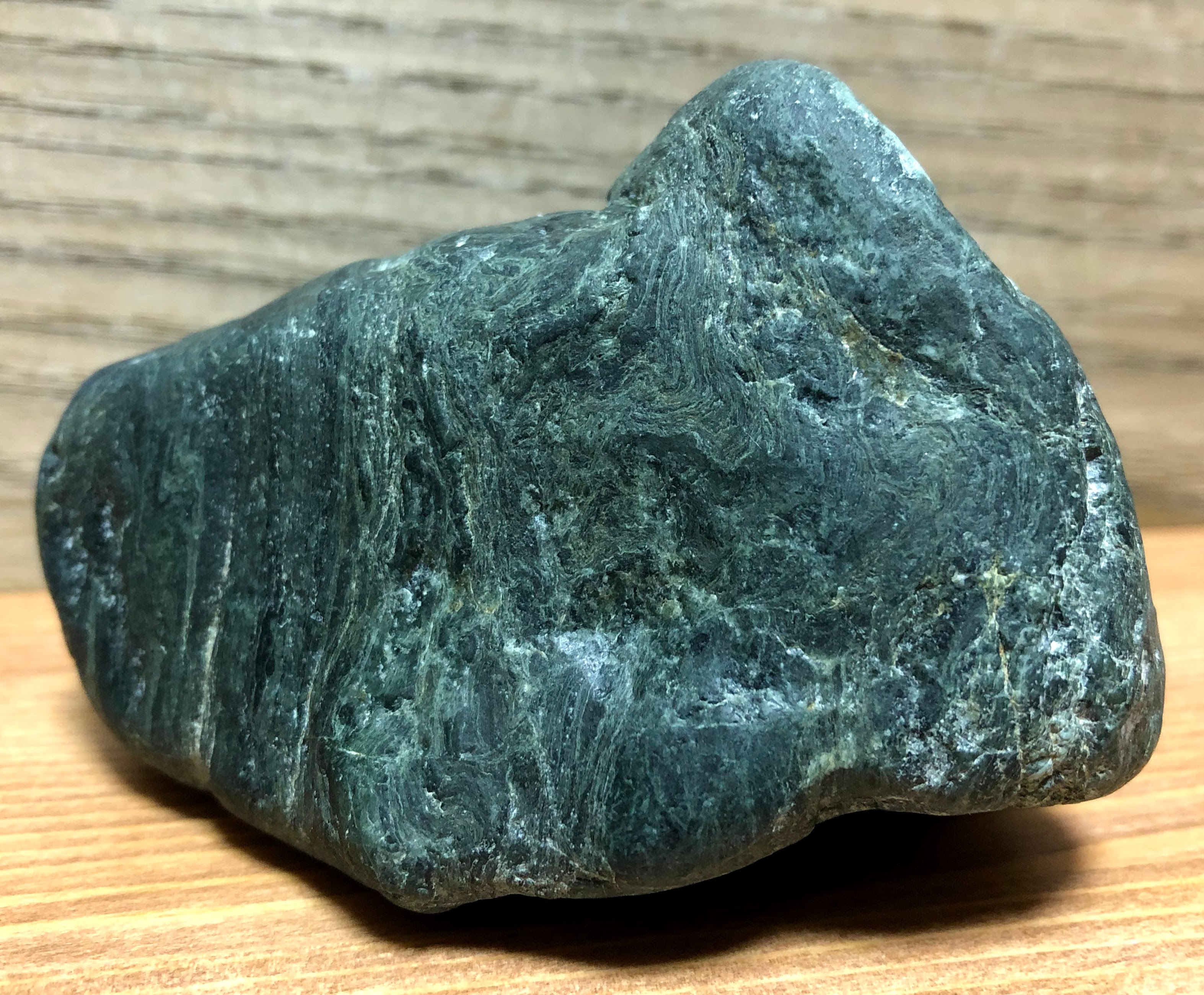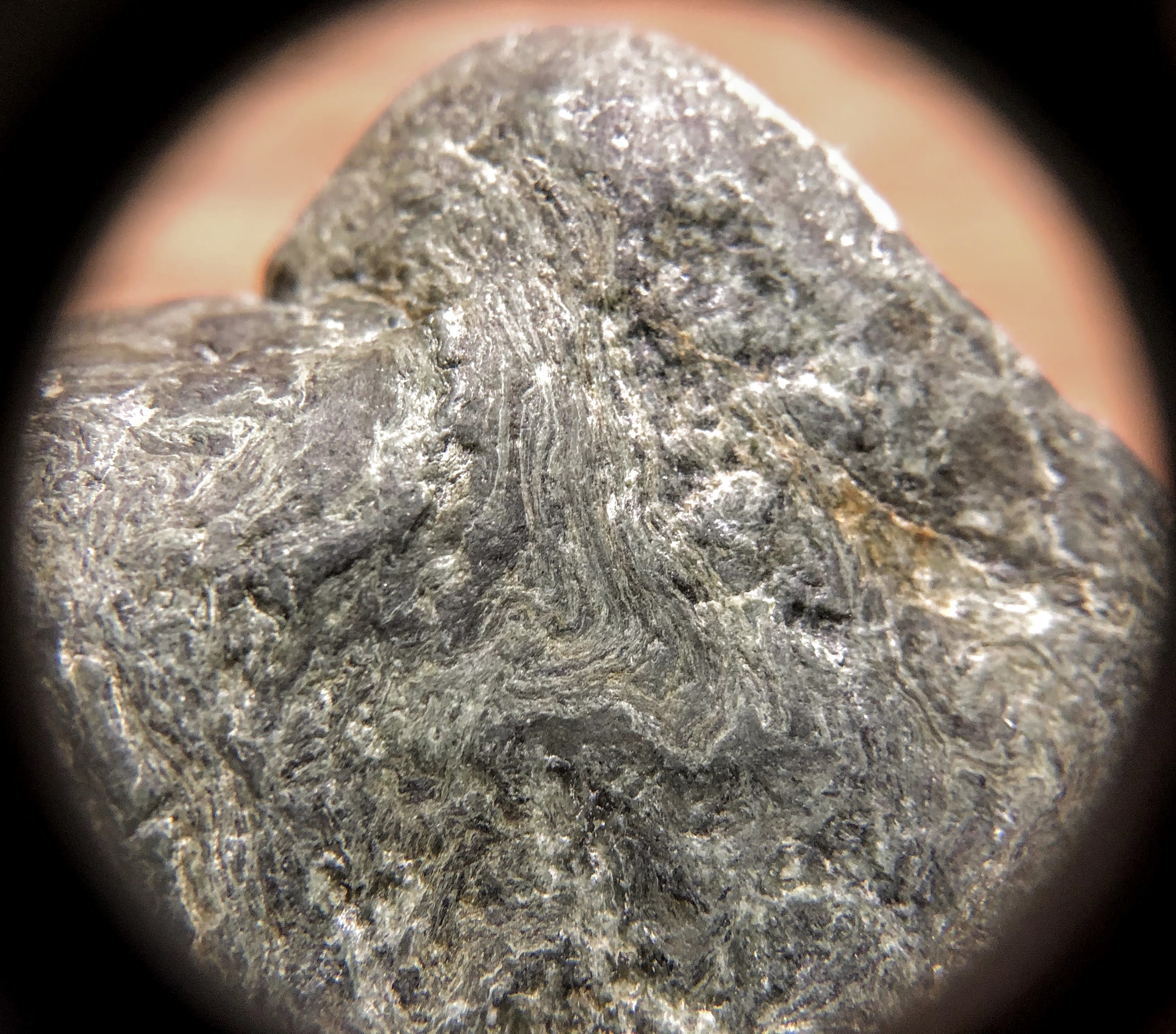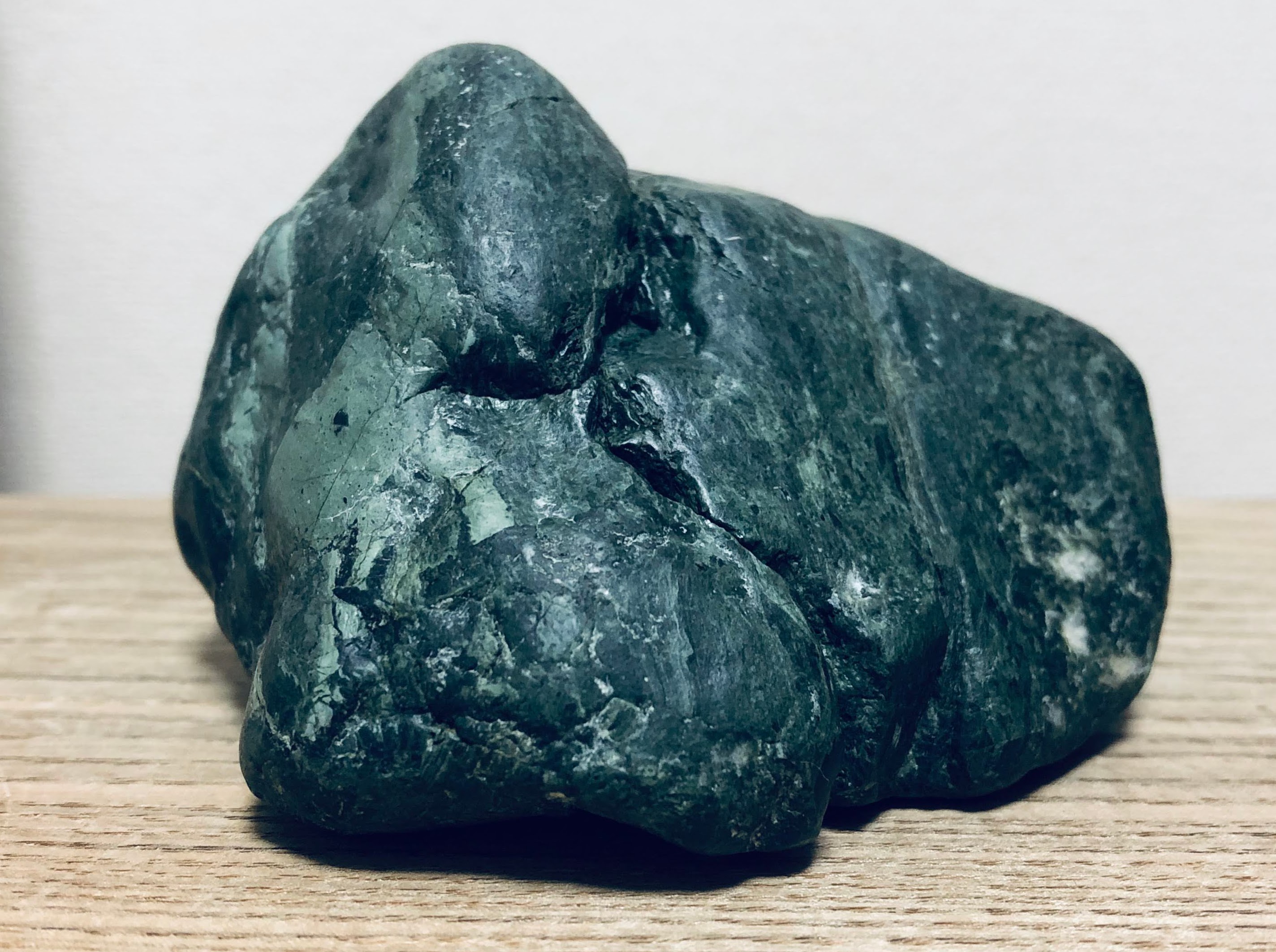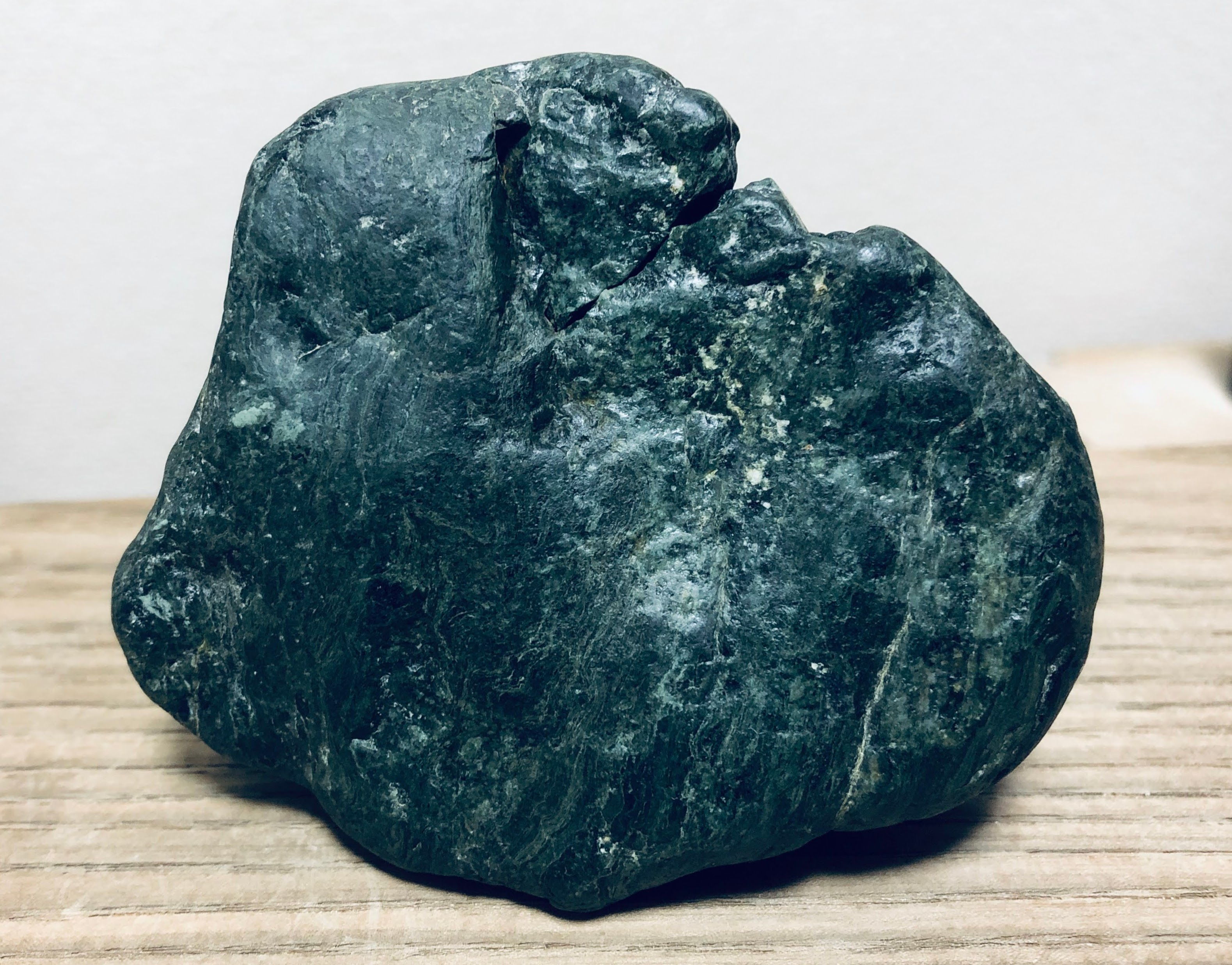KamuiCotan-seki-II, 神居古潭石
KamuiCotan-seki-II
The page of KamuiCotan-seki-I was made to introduce stones from Kamui Cotan. It is not exhaustive but just stones on hand.
I have made this KamuiCotan-seki II to the same effect because some stones were newly obtained.
Red KamuiCotan-seki
This is KamuiCotan-seki in red color.
Red KamuiCotan-seki is not the same stone with black KamuiCotan-seki.
Red KamuiCotan-seki is jasper or chert
In the case of this stone, rough surface on the back side seems to be chert.
On the other hand, white patterns on the front side seems to be silica inclusion and its texture around it is very smooth like jasper.
It is interesting that half jasper and half chert in one stone, however, I see the same situation in stones from other areas.
Red KamuiCotan-seki might be abundant silica chert.
KamuiCotan-seki, Riebeckite?
This is KamuiCotan-seki, Black crystalline schist, I guess.
First, I thought this is Riebeckite which is one of Kamui Cotan Seven Stones, Suiseki.
One sources said that Riebeckite in Kamui Cotan is green stone with white inclusion as this stone like.
However, the fibrous forms of riebeckite are known as crocidolite and are one of the six recognised types of asbestos.
Crocidolite is famous in hawk’s eye or tiger's eye and I thought this stone has reflection(chatoyancy) by crocidolite.
If watching black recessed parts of this stone carefully, light reflection(chatoyancy) like hair gloss which seems to be caused by fibrous composition can be observed.
However, it seems to be caused by graphite in black crystalline schist actually.
So, this stone is not Riebeckite but black crystalline schist.
Actually, Riebeckite can be found in Kamui Cotan. The following photo is one.
It is blue stone and it seems to be not appropriate for Suiseki.
Therefore, I believe that black crystalline schist is misunderstood as Riebeckite in Kamui Cotan.
KamuiCotan-seki, unknown
Honestly, I could not identify what this stone is. It may be chert but Golden KamuiCotan-seki in yellow portion.
By the way, Golden KamuiCotan-seki is yellow jasper.
However, KamuiCotan-seki, True black having good quality looks like vitreous silica like chert. So, this stone may be metamorphic rock including serpentinite.
On the other hand, holes all over there look like geode and several small quartz can be observed.
From this perspective, it looks like chert with plenty silica.
I am not sure this stone is chert or other types of stone, however, it shows that many kinds of interesting stones are found in Kamui Cotan either way.
KamuiCotan-seki, Green mud
This is KamuiCotan-seki, Green mud.
In Kamui Cotan, green stones are major basically. However, it is not the usual green stones observed in other areas. From the part worn down, it is dull shiny and smooth. This distinctive feature is by hardness of KamuiCotan-seki.
Basically, green mud is matt texture but it has dull shiny by its hardness. So, green mud has some elegance.
Green mud is not so popular in KamuiCotan-seki, however, it is a formidable stone hiding its magnificence.
KamuiCotan-seki, Shiny green
This stone should be the one called KamuiCotan-seki, Shiny green. In Japanese, it is 輝緑 meaning shiny green.
Actually, I recognized it as shiny green recently. Before that, I called it faked dusky purple. Because shiny green is quite rare and I did not know exactly what it is.
Now, I understand that shiny green and green mud are mixed in a stone in most cases, e.g, 30% shiny green and 70% green mud.
If it is 100% shiny green, it is called True shiny green (本輝緑) and it is very very rare.
In the case of this stone, it may be 80% shiny green and 20% green mud, so it is quite good.
Further, this stone has specific patterns like growth ring of the tree which can be seen in dusky purple.
Unfortunately, I recognized it as shiny green after I parted it.
Although this stone is almost the same size of the above green mud, this stone is heavy and also, hardness seems to be higher than green mud.
We only notice how precious stone is after we lose one.


